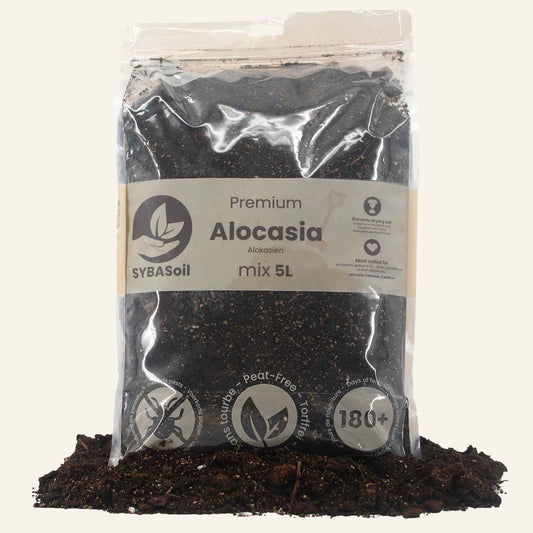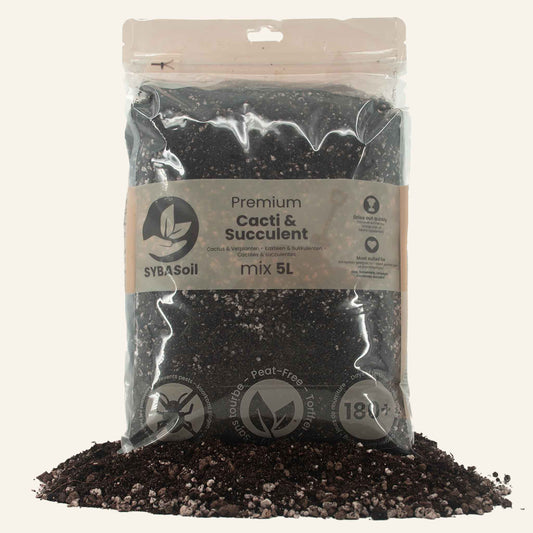Are you looking for an original way to expand your collection of houseplants? Then making propagations or propagations is a great option for you! It is a quick and easy method with which you can multiply your plant collection.
In this blog, I will tell you all about the different materials for making propagations. And why we recommend using Sphagnum Moss for making them.
Materials for making propagations
First of all, there are different materials you can make propagations on. The most popular material is Sphagnum Moss. This is a type of moss that retains moisture and releases it to the roots. Other propagation materials are Perlite, Coco potting soil, LECA, and Vermiculite. Each material has its own advantages. Perlite provides good drainage and thus airy propagation soil. Coco soil is suitable for most houseplants because it is pH neutral. Leca holds water well, with less chance of root rot. And vermiculite works best for sowing seeds.
Furthermore, it is also possible to propagate plants on water. It is important to note that you should always use clean material. This will prevent the chance of bacterial infections and fungal growth.
There are many different materials and ways to make propagations. We generally recommend using Sphagnum Moss. This method ensures healthy roots that will last a long time. When the roots are large enough, you can transfer the plant to the soil. It is important to wait until the roots have developed enough. otherwise there is a chance that your propagations will not survive repotting.
Can I always take propagations?
Making propagations of houseplants is best done in spring and summer. This is because the chance of survival for the plant outside these seasons is too small. In spring and summer, the plants have more energy to grow and develop. This increases the chances of success.
Different forms of propagations
You can make different types of propagations for different plants. Below we give you an overview.
Stem propagations
For stem propagations, a branch is cut from the plant. This branch is treated in a certain way to grow roots. Whatever method you choose, make sure you use the right technique for your plant. And that the scissors you use to cut the branch and the plant are clean (and healthy).
Succulents
With succulents, you can make a propagation by carefully removing a leaf from the stem. First let this leaf dry for a few days and then place it on slightly moist soil. Then it's a lot of patience! This is because these propagations will root and grow very slowly. Avoid that the soil is too wet, or your leaf too fresh, this will prevent your propagation from rotting.
Root propagations
Root propagations involve placing a branch directly into soil, water or sphagnum. After which new roots form and a new plant is created.
Tips & tricks
- Change your water every week with propagations on water to prevent algae growth. Some people choose not to change the water. The propagation releases rooting hormones to the water as it grows. This can cause more roots to grow faster. Do change your water when it becomes green and cloudy. The algae growth absorbs all the oxygen from your water, which your propagation also needs!
- If you use a closed container with sphagnum for propagations, make sure there is enough ventilation. Because in an airtight container there is a big chance of mold. Then also make sure to sterilize your plants and scissors.
- Haven't made propagations before? Then experiment first with an easier plant. Philodendron, pothos and monstera root quickly in water. And so are ideal plants to get some plant propagation experience.
- Plant propagations take quite a long time and are not always successful. The more propagations you make, the greater the chance of getting a new plant!
In summary
Whether you are just starting to collect houseplants or are already an experienced plant lover, plant propagations are a great way to expand your collection. By choosing the right method, time and materials, you can create your own green oasis.
See which method suits you, experiment and enjoy the propagation process! Know that you can always come to us for propagation materials and advice!











